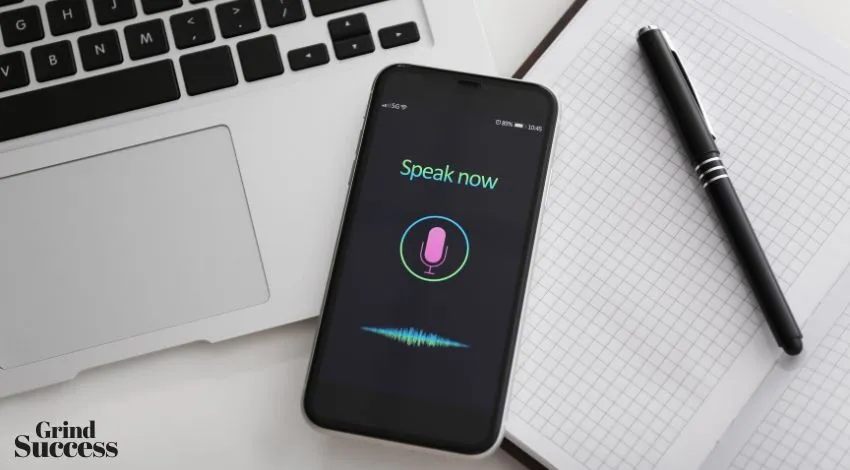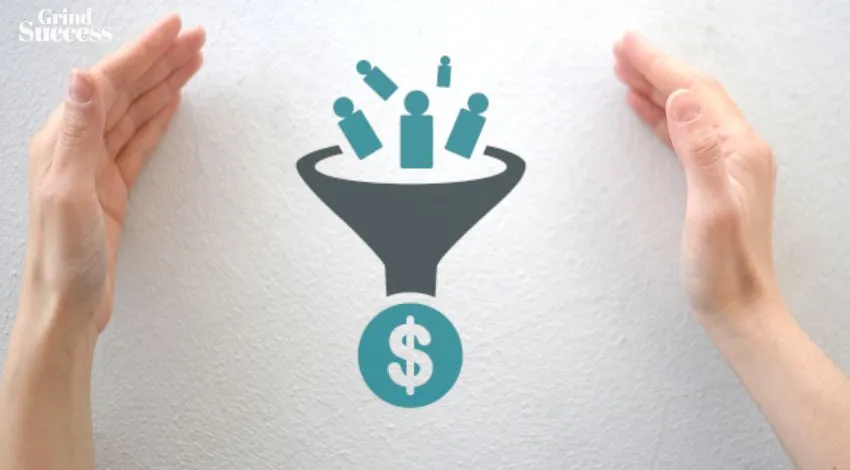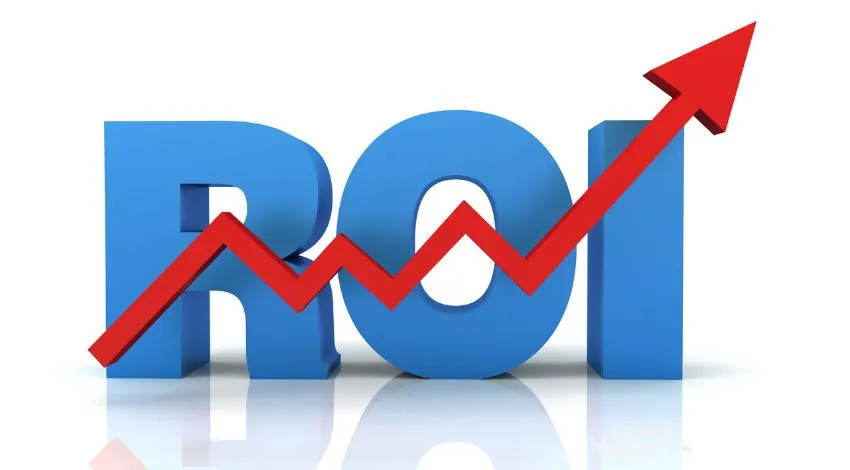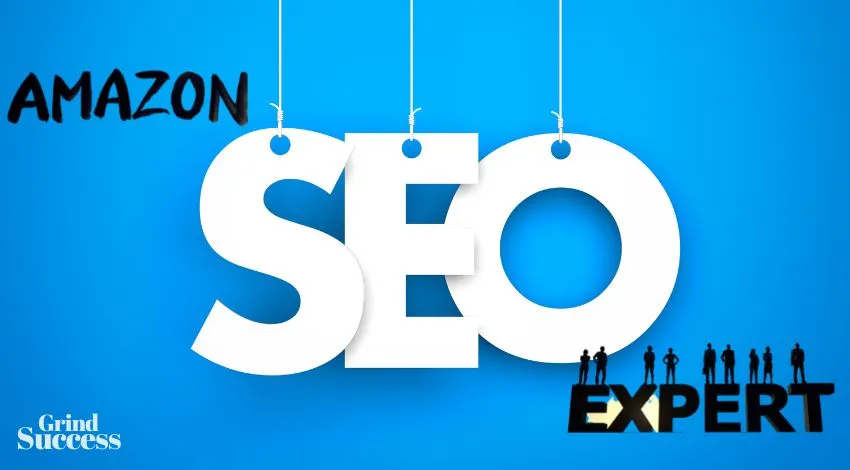8 Copywriter-Approved Tips For Writing Facebook Ads that Sell
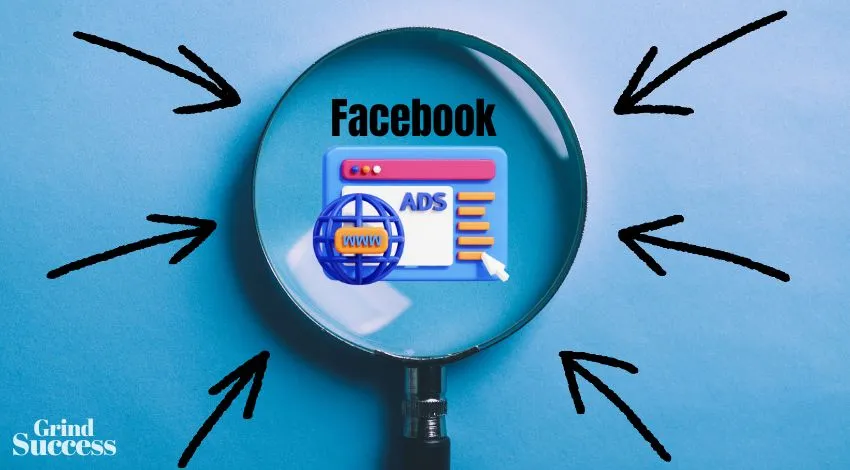
The modern Facebook advertising landscape is intense.
Marketers around the globe are constantly competing for the attention of their target audience online, obsessing over creating eye-catching video assets and bold ad visuals.
However, many brands can find themselves neglecting their ad copy in pursuit of superior Facebook video assets – and this can be a costly mistake.
While your ad visuals are super important, your copywriting can make the difference between high-performing campaigns and underwhelming results.
Razor-sharp ad copy will enable you to capture user attention, strengthen your brand identity, and generate profitable conversions.
So what makes for effective and impactful Facebook ad copywriting?
You’re about to find out. We’ve pulled together 8 expert tips for creating powerful Facebook ad copy, certified and approved by a team of veteran copywriters.
Table of Contents
Why is copywriting so important for Facebook advertisers?
Many brands are quick to dismiss the value of Facebook copywriting, but a copy isn’t just a side dish that accompanies your video-marketing main course.
Good copywriting can have a huge impact on your ad revenue and conversion rates, as well as influencing your brand identity and customer interactions.
For one thing, copywriting is crucial to bolstering your brand tone of voice. Establishing and maintaining a recognizable copywriting style is a major part of your brand personality – the more consistent you are with your brand voice, the faster you’ll build trust with consumers.
Secondly, effective copywriting can help to nudge potential customers over the finish line.
While videos and images may stand out in a competitive Facebook feed, it’s your ad copy that drives home core product benefits and delivers compelling CTAs. If your visual assets are the shop window, your ad copy is the persuasive salesman that generates conversions.
Finally, creative ad copywriting can help you to instantly differentiate yourself from the competition. Many lazy Facebook marketers will relegate their copy to the sidelines, allowing you to stand out and demand attention with high-quality copywriting.
How to create Facebook ad copy that sells
1. Know your audience
If you’re not 100% clear on your target audience, it’s going to be impossible to write effective copy that engages them.
Before you start producing any creative assets, establish a customer profile that will dictate your Facebook targeting and brand messaging.
Be sure to leverage Facebook’s advanced targeting capabilities to build these audience segments. You can add multiple layers of data to refine your target audience, from demographic details to hobbies and interests.

Once your target audience is crystal clear, focus on crafting ad copy that’s tailored to their unique passions, challenges, and behaviors.
Use language that your audience will understand, address their specific pain points, and always imagine that you’re speaking to them directly.
Over time, you’ll be able to identify the messages that resonate most with your target audience – and this is where you can begin to seriously ramp up your conversion rates.
2. Brainstorm creative ideas
Carving out time for creativity in your busy work schedule can feel impossible. You’ve got emails to send, meetings to coordinate, and messages to respond to – it all piles up pretty fast.
But if you want to produce Facebook ad copy that delivers results, you need to dedicate time to the creative process.
Brainstorming creative ideas is crucial if you want to elevate your ad content and stand out from the competition, so make sure that you’re allocating time for this on a regular basis. It doesn’t need to take up your entire day, either.
You’d be surprised at the creative gems you can conjure up when you dedicate an hour to brainstorming.
Churn out a few ideas for your next ad campaign, and then narrow it down to the best one or two concepts. Once you’ve got these little creative sparks, it’s just a matter of polishing them and transforming them into real ads.
The outputs could be as simple as a fresh headline, or a new way of framing your product benefits. Not everything needs to be a creative revolution. Just a good idea.
Just remember to focus on creative executions that will work for your business. That means something that differentiates your brand, showcases your offering, highlights your product benefits, and captures attention.
3. Keep it simple
There’s a lot to consider when you’re crafting a new piece of ad copy, from target audiences to CTAs and ad specifications.
However, one of the most important aspects of copywriting is also one of the most basic.
Keep things simple.
It might sound a little odd, but complex ad messaging is often a sign of laziness. Anyone can pack their ads full of long-winded sentences, complex phrases, and technical jargon.
The most effective ad campaigns are those that distill a big idea into a simple, engaging, creative piece of ad copy.
Whenever you’re working up a new copy, remind yourself that simplicity is key. Avoid clunky phrasing and complicated language that will be confusing for new customers, and aim to produce something clean and simple.
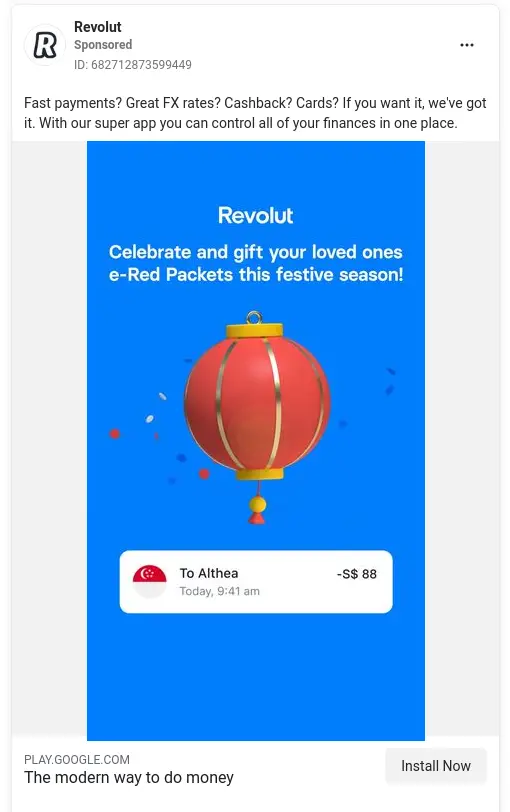
Take a step back and imagine that you’re reading your ad as a prospect with zero knowledge of your industry. Does it make sense? Or do you need to go back to the drawing board?
If your Facebook ad copy flows naturally, avoids jargon, and highlights your most persuasive product messages, then you’re on the right track.
4. Create a strong Call-To-Action
Your Call-To-Action is a fundamental part of your Facebook ad copy.
A persuasive and logical CTA will generate clicks, while a weak and confusing CTA will lose customers. It’s as simple as that.
You should incorporate a CTA directly into your ad text, as well as utilize the CTA button below your Facebook ad. If you’re running a video asset, you should also include an obvious CTA in your script.
(While you don’t want to overload your target audience with aggressive sales messaging, you do want to nudge them towards that all-important click.)

Keep your CTAs clear and simple – there’s no need to overthink them. If you want prospects to discover more information, use ‘Learn More’. If you want prospects to purchase something, use ‘Buy Now’.
Finally, always make sure that your CTA is relevant to your ad copy and aligned with the customer journey.
When consumers click a CTA, they should know exactly what to expect on your landing page. Disjointed and confusing customer journeys will lower your conversion rate, so think of the CTA as a crucial stepping stone between Facebook and your website.
5. Utilise eye-catching visuals
We’ve spent a lot of time emphasizing the power of ad copy in your Facebook campaigns, but that doesn’t mean you should forget about the importance of your visuals.
Visual content is incredibly impactful on Facebook. Research shows that visuals are processed 60,000x faster than text, while visual assets are 40x more likely to get shared on social media than other content types.
If you want your ads to stand out in a competitive feed, a visual presence is crucial.
That’s why your ad copy and visual content need to work together in perfect harmony. Use visual assets to capture attention, and snappy copywriting to land your selling points.
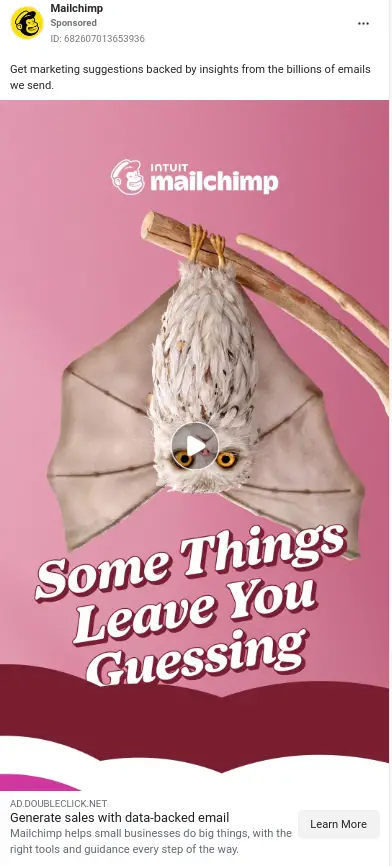
You should design any Facebook ad visuals (e.g. images or videos) with a clear hook that lures in potential customers. This could be eye-catching motion and color, high-impact headlines, or attention-grabbing imagery – anything that will stop someone from scrolling down to the next piece of content.
Once you’ve secured the attention of your audience, you can utilize copywriting to nail your product benefits, expand on the value of your business, and deliver a compelling CTA.
6. Tell a story
Stories are naturally engaging for humans, which is why storytelling can be a potent weapon for copywriters.
So how can you leverage storytelling in your Facebook ad copy?
Storytelling can help you to add more context to your products and services, which often leads to more persuasive messaging.
For example, you might use storytelling to provide readers with real-world examples of product benefits.
You can tell stories about happy customers, successful clients, and business milestones – you’re still landing basic product messaging, but in a more captivating way.
Storytelling is also a great way to make your brand feel more relatable. You could use storytelling to highlight some of the issues or challenges that you’ve faced as a business, which allows customers to empathize with your company.
If consumers feel like your brand is more human and relatable, it will become much easier to build trust with your target audience.
7. Use actionable language and leverage sales copy principles
Employing a few experts copywriting tips and tricks can have a significant impact on your Facebook performance.
For instance, utilizing action-oriented language is a small adjustment that can deliver big results for your business.
Phrases such as ‘download’, ‘unlock’, ‘secure’, and ‘access’ immediately encourage users to take action, helping you to adopt an active tone rather than a passive one. This is a subtle technique, but it can effectively motivate your target audience to click and convert.

Copywriting strategies revolving around FOMO and urgency are also proven to drive results.
In the case of FOMO, you want users to feel like they’re desperately missing out on something valuable or useful so they’re incentivized to click on your ads.
This can be achieved through phrases like:
Urgency is another strong motivator that you can evoke through your Facebook copy. By stressing the scarcity of your products (e.g. ‘Stocks are selling out fast’) you can give users the nudge they need to commit and convert.
Lastly, never underestimate the power of statistics and data in your Facebook copy.
Slick copy and creative language can be highly persuasive, but hard numbers have a unique impact on potential customers. If you have a compelling performance, ROI, or customer satisfaction statistic, don’t hesitate to throw it into the mix.
8. Test, measure, and adapt
So, we’ve covered a lot of best practices in this guide. Let’s say that you implement all of these high-powered copywriting techniques in your next ad campaign.
How do you know if your Facebook copy is actually working or not? And how can you identify new opportunities for superior ads?
The key is to balance proactive testing with accurate measurement and data-driven optimizations. Below is an easy-to-follow ‘test, measure, adapt’ framework that will help you to enhance the effectiveness of your Facebook campaigns.
#. Setting up A/B testing
A/B testing is a surefire way to improve Facebook ad performance and skyrocket your ROI.
By launching A/B tests, you can experiment with different ad copy variables (e.g. headline, CTA, primary text) to rapidly refine your creative assets. Over time, you’ll identify the best-performing elements of your Facebook ads and use these insights to fuel performance.
Facebook also enables brands to set up fully-automated A/B tests, so it’s super simple to get your tests up and running.
#. Measuring ad performance
Once you’ve set up and launched A/B tests, you’ll need to keep a close eye on your campaign data to monitor the results.
Fortunately, Facebook’s built-in analytics tools provide you with all the data you need.
You can use the Facebook Ads Manager to produce custom reports, check your priority metrics, and analyze data. The key here is consistency. Stay close to your reports and trust what the data is telling you.
#. Adapting and optimizing
Once you’ve gathered and analyzed your campaign data, it’s time to make smart optimizations.
Look closely at the data to understand which aspects of your ad copy are performing best.
Is a particular headline delivering a higher CTR? Are certain product messages leading to increased website traffic? Which CTA is generating the most conversions?
Once you’ve identified these performance trends, you can shift your budgets accordingly and adapt your creative approach moving forward. Plus, you can constantly repeat this entire testing process to perfect your ad copy and maximize returns.
It may sound cliché, but Facebook ad copywriting is a mixture of art and science.
If you want to stand out from the crowd, you’ll need to inject some serious creativity into your campaigns. That means brainstorming fresh ideas, utilizing powerful sales techniques, and crafting eye-catching copy.
However, you’ll also need to balance this creativity with a little science.
Leverage audience data to build cost-efficient targeting segments, and lean on your campaign reports to make intelligent optimizations.
If you can follow all of these best practices during your next Facebook ad campaign, you’ll be left with top-tier copywriting that engages audiences and drives high-value conversions.
This post was proofread by Grammarly. Try it – It’s Free!
Millions trust Grammarly’s free writing app to make their online writing clear and effective. Getting started is simple
Email, SMS, and more — Klaviyo brings your marketing all together, fueling growth without burning through time and resources.
Deliver more relevant email and text messages — powered by your data. Klaviyo helps you turn one-time buyers into repeat customers with all the power of an enterprise solution and none of the complexity.

